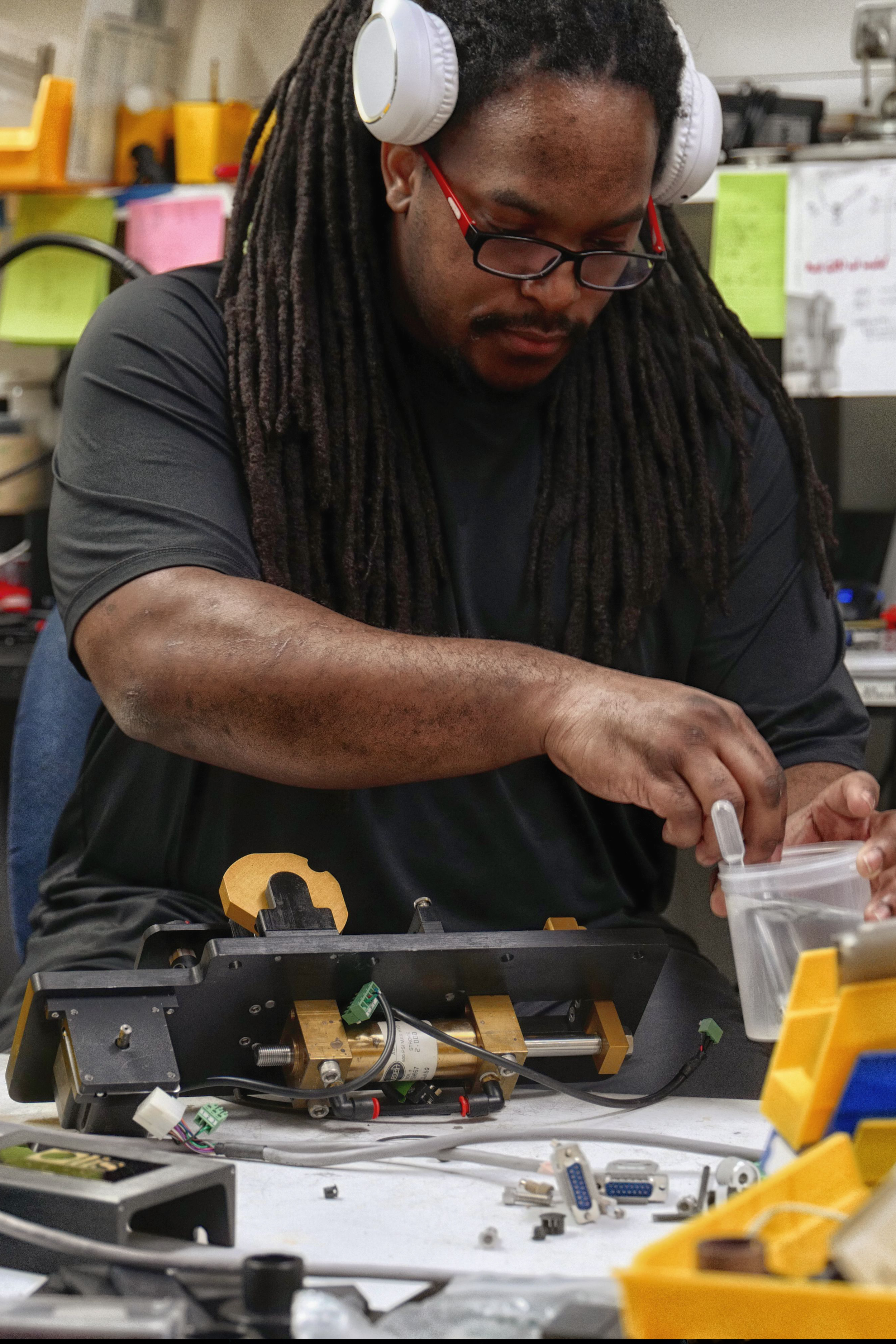The Main Principles Of Circular Dichroism
The Main Principles Of Circular Dichroism
Blog Article
Circularly Polarized Luminescence Fundamentals Explained
Table of Contents3 Easy Facts About Uv/vis/nir DescribedSome Of Circular DichroismGetting My Circular Dichroism To WorkThe Best Guide To Uv/visWhat Does Uv/vis/nir Do?

Spectrophotometry is a tool that hinges on the quantitative analysis of molecules depending on how much light is absorbed by colored compounds.
Our Circularly Polarized Luminescence Statements
A spectrophotometer is commonly used for the measurement of transmittance or reflectance of solutions, transparent or opaque solids, such as polished glass, or gases. Lots of biochemicals are colored, as in, they absorb noticeable light and for that reason can be determined by colorimetric procedures, even colorless biochemicals can typically be transformed to colored compounds ideal for chromogenic color-forming responses to yield compounds suitable for colorimetric analysis.: 65 Nevertheless, they can likewise be developed to measure the diffusivity on any of the listed light varieties that typically cover around 2002500 nm utilizing different controls and calibrations.
An example of an experiment in which spectrophotometry is utilized is the determination of the balance constant of an option. A particular chemical response within a solution might occur in a forward and reverse direction, where reactants form products and items break down into reactants. Eventually, this chemical reaction will reach a point of balance called a stability point.
Some Ideas on Circular Dichroism You Should Know
The amount of light that travels through the service is a sign of the concentration of particular chemicals that do not enable light to go through. The absorption of light is due to the interaction of light with the electronic and vibrational modes of molecules. Each type of molecule has a specific set of energy levels connected with the makeup of its chemical bonds and nuclei and therefore will soak up light of specific wavelengths, or energies, leading to distinct spectral homes.
They are extensively utilized in lots of industries consisting of semiconductors, laser and optical production, printing and forensic examination, as well as in laboratories for the study of chemical substances. Spectrophotometry is often utilized in measurements of enzyme activities, determinations of protein concentrations, decisions of enzymatic kinetic constants, and measurements of ligand binding reactions.: 65 Ultimately, a spectrophotometer is able to figure out, depending on the control or calibration, what compounds are present in a target and exactly how much through computations of observed wavelengths.
This would come as an option to the formerly developed spectrophotometers which were not able to soak up the ultraviolet properly.
Get This Report on Uv/vis
It would be discovered that this did not provide acceptable outcomes, for that reason in Design B, there was a shift from a glass to a quartz prism which enabled better absorbance outcomes - UV/Vis (https://www.cgmimm.com/arts-entertainment/olis-clarity). From there, Model C was born with a modification to the wavelength resolution which ended up having three systems of it produced
It irradiates the sample with polychromatic light which the sample absorbs depending upon its homes. Then it is transferred back by grating the photodiode range which discovers the wavelength region of the spectrum. Ever since, the creation and execution of spectrophotometry gadgets has increased tremendously and has ended up being one of the most innovative instruments of our time.

An Unbiased View of Circular Dichroism
Historically, spectrophotometers utilize a monochromator including a diffraction grating to produce the analytical spectrum. The grating can either be movable or fixed. If a single detector, such as a photomultiplier tube or photodiode is utilized, the grating can be scanned step-by-step (scanning spectrophotometer) so that the detector can measure the light strength at each wavelength (which will correspond to each "step").
In such systems, the grating is repaired and the intensity of each wavelength of light is determined by a different detector in the array. In addition, most modern-day mid-infrared spectrophotometers use a Fourier change method to acquire the spectral info - https://www.quora.com/profile/Julie-Ann-DeSa-Lorenz. This strategy is called Fourier transform infrared spectroscopy. When making transmission measurements, the spectrophotometer quantitatively compares the fraction of light that passes through a reference option and a test service, then digitally compares the intensities of the 2 signals and computes the portion of transmission of the sample compared to the referral requirement.

Report this page